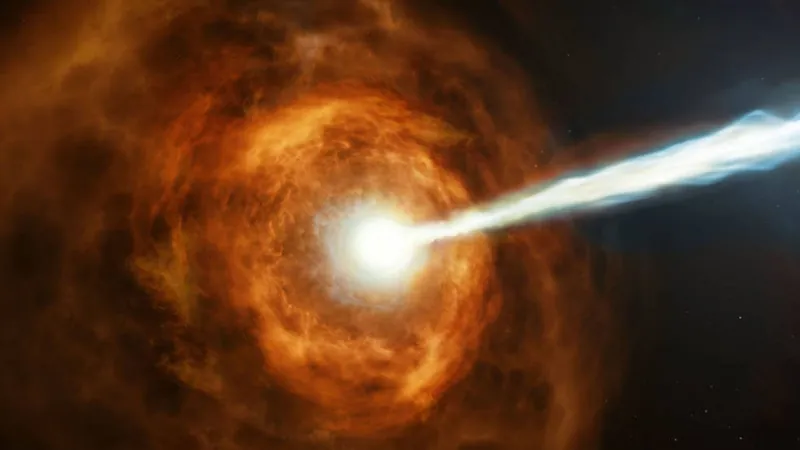
Exploding Stars: The Shocking Origins of Gold Revealed by Gamma-Ray Bursts!
2025-04-07
Author: Emily
Prepare to have your mind blown! Scientists have uncovered groundbreaking insights into one of the universe's greatest mysteries: how the heaviest elements, like gold, are created in the cosmos. At the heart of this revelation are gamma-ray bursts, which are the most energetic explosions known, delivering extraordinary light and potentially playing a crucial role in the formation of precious metals.
A recent study led by physicist Matthew Mumpower from the esteemed Los Alamos National Laboratory in New Mexico dives deep into the relationship between these explosive events and the creation of heavy elements. Traditionally, researchers believed that elements heavier than iron, such as gold and platinum, required an abundance of free neutrons found only in specific cosmic environments, like during the catastrophic collisions of neutron stars.
But hold onto your hats! Mumpower and his team have proposed that the intense photons emitted during a gamma-ray burst could actually generate neutrons, offering a fresh perspective on how these heavy elements are forged. According to Mumpower, "If you have energetic photons, you'll produce neutrons. And if you have neutrons, you can create heavy elements."
This revelation stems from an example involving dying massive stars. When such a star exhausts its nuclear fuel, its core collapses, forming a black hole that triggers gamma-ray bursts. Notably, if the newly formed black hole spins rapidly, it can eject powerful jets that collide with the star's outer layers, resulting in an eruption of energy. These intense jets could lead to the rapid transmutation of protons into neutrons, as well as the breaking apart of atomic nuclei, generating the necessary free neutrons for heavy element formation.
Mumpower's inspiration for this study came from a simple yet captivating moment watching videos with his children during the pandemic. A slow-motion clip of a freight train crashing through a snowbank struck a chord with him, sparking a captivating analogy between the jet of photons and the immense forces within astrophysical phenomena.
This new framework does more than provide a novel mechanism for heavy element production; it could also clarify some enigmatic phenomena observed on Earth. For instance, the presence of radioactive materials like iron-60 and plutonium-244 found in deep-sea sediments has puzzled scientists, raising questions about their source, which this study could illuminate.
Additionally, their findings might shed light on the recent detection of a kilonova—a brilliant cosmic event linked to gamma-ray bursts, previously thought to be exclusive to neutron star collisions. The implications of Mumpower's research could redefine our understanding of stellar evolution and the origins of heavy elements in the universe.
Mumpower and his team are eager for future astronomical observations that can either validate or challenge their findings. With advanced telescopes ready to track light, neutrinos, and gravitational waves, the cosmic quest for understanding how gold and other heavy elements come into existence could soon take a thrilling new turn. Stay tuned for what could be the next great discovery in astrophysics!









 Brasil (PT)
Brasil (PT)
 Canada (EN)
Canada (EN)
 Chile (ES)
Chile (ES)
 Česko (CS)
Česko (CS)
 대한민국 (KO)
대한민국 (KO)
 España (ES)
España (ES)
 France (FR)
France (FR)
 Hong Kong (EN)
Hong Kong (EN)
 Italia (IT)
Italia (IT)
 日本 (JA)
日本 (JA)
 Magyarország (HU)
Magyarország (HU)
 Norge (NO)
Norge (NO)
 Polska (PL)
Polska (PL)
 Schweiz (DE)
Schweiz (DE)
 Singapore (EN)
Singapore (EN)
 Sverige (SV)
Sverige (SV)
 Suomi (FI)
Suomi (FI)
 Türkiye (TR)
Türkiye (TR)
 الإمارات العربية المتحدة (AR)
الإمارات العربية المتحدة (AR)